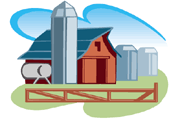Bulletin #2345, Maine Farm Safety Program: First Aid for Bee and Insect Stings

Bulletin #2345, Maine Farm Safety Program: First Aid for Bee and Insect Stings (PDF)
By Dawna L. Cyr, Farm Safety Project Assistant, and Steven B. Johnson, Ph.D., Extension Crops Specialist
For information about UMaine Extension programs and resources, visit extension.umaine.edu.
Find more of our publications and books at extension.umaine.edu/publications/.
Most bees and insects will not attack if left alone. If provoked, a bee will sting in defense of its nest or itself. Thousands of people are stung each year and as many as 40 to 50 people in the United States die each year as a result of allergic reactions.
Reduce the Risk of Being Stung
- Wear light-colored, smooth-finished clothing.
- Avoid perfumed soaps, shampoos, and deodorants. Don’t wear cologne or perfume. Avoid bananas and banana-scented toiletries.
- Wear clean clothing and bathe daily. Sweat angers bees.
- Cover the body as much as possible with clothing.
- Avoid flowering plants.
- Check for new nests during the warmer hours of the day during July, August and September. Bees are very active then.
- Keep the areas clean. Social wasps thrive in places where humans discard food, so clean up picnic tables, grills and other outdoor eating areas.
- If a single stinging insect is flying around, remain still or lie face down on the ground. The face is the most likely place for a bee or wasp to sting. Swinging or swatting at an insect may cause it to sting.
- If you are attacked by several stinging insects at the same time, run to get away from them. Bees release a chemical when they sting. This alerts other bees to the intruder. More bees often follow. If possible, get indoors when there are few, if any, bees around you. Outdoors, a shaded area is better than an open area to get away from the insects.
- If a bee comes inside your vehicle, stop the car slowly, and open all the windows.
Light-colored clothing attracts fewer bees than does dark clothing
First Aid for Bee and Insect Stings:
- Scrape the stinger out from the stung area — never squeeze or pull out the stinger.
- Persons with severe allergic reactions to insect stings should consider wearing a medical ID bracelet and carrying an insect allergy kit where appropriate.
What to Do if a Person is Stung
- Have someone stay with the victim to be sure that they do not have an allergic reaction.
- Wash the site with soap and water.
- The stinger can be removed using a 4×4-inch gauze wiped over the area or by scraping a fingernail over the area. Never squeeze the stinger or use tweezers. It will cause more venom to go into the skin and injure the muscle.
- Apply ice to reduce the swelling.
- Do not scratch the sting. This will cause the site to swell and itch more, and increase the chance of infection.
Allergic Reactions to Bee Stings
Allergic reactions to bee stings can be deadly. People with known allergies to insects stings should always carry an insect sting allergy kit and wear a medical ID bracelet or necklace stating their allergy. See a physician about getting either of these.
There are several signs of an allergic reaction to bee stings. Look for swelling that moves to other parts of the body, especially the face or neck. Check for difficulty in breathing, wheezing, dizziness or a drop in blood pressure. Get the person immediate medical care if any of these signs are present. It is normal for the area that has been stung to hurt, have a hard swollen lump, get red and itch. There are kits available to reduce the pain of an insect sting. They are a valuable addition to a first aid kit.
For information on safely removing known nests, contact the Extension Office in your area.
This Maine Farm Safety fact sheet is part of an educational fact sheet series produced by University of Maine Cooperative Extension. For more information on farm safety, contact your UMaine Extension County Office.
Information in this publication is provided purely for educational purposes. No responsibility is assumed for any problems associated with the use of products or services mentioned. No endorsement of products or companies is intended, nor is criticism of unnamed products or companies implied.
© 2002, reviewed 2020
Call 800.287.0274 (in Maine), or 207.581.3188, for information on publications and program offerings from University of Maine Cooperative Extension, or visit extension.umaine.edu.
In complying with the letter and spirit of applicable laws and pursuing its own goals of diversity, the University of Maine System does not discriminate on the grounds of race, color, religion, sex, sexual orientation, transgender status, gender, gender identity or expression, ethnicity, national origin, citizenship status, familial status, ancestry, age, disability physical or mental, genetic information, or veterans or military status in employment, education, and all other programs and activities. The University provides reasonable accommodations to qualified individuals with disabilities upon request. The following person has been designated to handle inquiries regarding non-discrimination policies: Director of Equal Opportunity and Title IX Services, 5713 Chadbourne Hall, Room 412, University of Maine, Orono, ME 04469-5713, 207.581.1226, TTY 711 (Maine Relay System).

